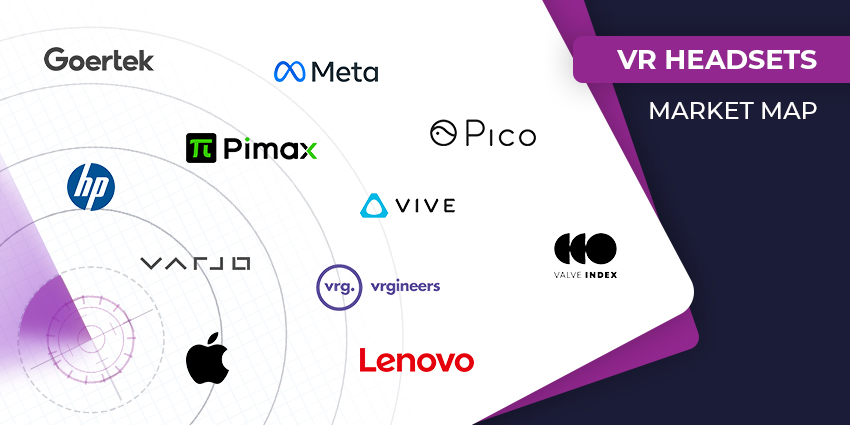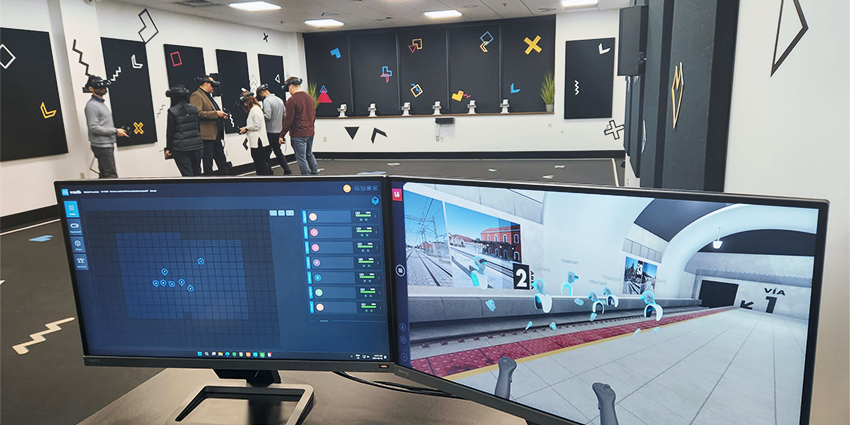What is virtual reality as a service, and could it help drive the adoption of XR technology?
Demand for virtual reality solutions has been accelerating for some time now. The market for VR technology is expected to reach a value of $187.28 billion by 2032, growing at a CAGR of 22.9%.
While the consumer market still represents a significant opportunity for extended reality innovators, business leaders and enterprises are also taking notice of the landscape. Almost every industry, from healthcare to manufacturing and education, has begun to see the benefits of VR.
Virtual reality landscapes can help companies enhance collaboration and innovation, provide access to intuitive training experiences, and even deliver fantastic customer experiences. However, while the arrival of more affordable hardware and more convenient software platforms has reduced the barrier to entry, there are still challenges to overcome.
Companies struggle to navigate issues like limited budgets and employee expertise, reducing VR adoption. That’s where new delivery models like Virtual Reality as a Service come in.
What is Virtual Reality as a Service?
So, what is virtual reality as a service? To fully answer this question, we must first understand the “as a service” business model. An “as a service” model allows companies and consumers to purchase solutions as needed rather than acquiring technology outright.
Companies pay a subscription fee to leverage the support, software, hardware, and other necessary solutions. For instance, CCaaS, or “contact center as a service,” platforms allow companies to harness cloud-based technologies for customer communication in a flexible format.
Virtual Reality as a Service (VRaaS) solutions empower companies to access virtual reality experiences and tools using the same model. Rather than purchasing headsets directly for a team, they might “hire” headsets from a vendor regularly. Instead of buying technology to create VR applications and software, they pay a subscription fee to access the necessary tools.
This business model allows companies to overcome roadblocks to XR adoption, such as high costs for purchasing software and devices and hiring experts to maintain technology, develop applications, and deliver support.
Examples of Virtual Reality as a Service
Ultimately, virtual reality as a service (VRaaS) solutions make it easier for companies to access the VR world and customize their technologies to their specific needs. Companies can offer VRaaS solutions that empower organizations to create custom content, such as training applications.
Organizations can take advantage of low-risk trials and pilots for VR initiatives, experimenting with technologies before they roll solutions out to their entire team. Though the concept is still relatively new in the XR world, VRaaS vendors are beginning to attract significant attention.
For instance, Virtualware, a Spanish VR firm specializing in training solutions, offers access to a VRaaS platform (VIROO). This platform delivers an all-in-one multi-user solution for creating VR applications with remote deployment and development abilities.
Lenovo, another market-leading technology brand, offers a similar “VRaaS” solution with its ThinkReality platform. The platform allows companies to work with third-party tools and technologies to create bespoke VR and AR experiences.
Elsewhere, ARuVR, a leading VR/AR training company, offers VRaaS services in the form of all-inclusive packages, which help companies create immersive training simulations. With ARuVR technology, companies can unlock the power of a scalable turnkey XR environment that adapts to their needs.
The Benefits of Virtual Reality as a Service
So, what is Virtual Reality as a Service good for?
Countless companies in virtually every sector are already benefitting from the development of advanced and intuitive virtual reality tools. Organizations use virtual reality to embed their team members in immersive training simulations, providing access to crucial new skills.
Teams are stepping into corporate metaverse environments infused with VR to collaborate on product development and connect with staff members all over the globe. Companies are even using VR to deliver new types of support to customers, allowing technicians and subject matter experts to provide demonstrations, onboard clients, and answer questions in a virtual world.
VRaaS empowers companies to leverage an on-demand VR production and consumption model that carries minimal risk. It ensures companies can consume and produce innovative technology through an agile and scalable model as needed.
The benefits include:
1. Access to Customized Solutions
Virtual Reality as a Service ensures companies can explore the benefits of VR technologies in a bespoke, customizable format. Organizations can access platforms to develop, host, and manage virtual reality applications designed for specific use cases, like employee training.
Companies can access the services and support of VR experts on demand to help them configure and optimize the technologies they need. VRaaS allows companies to adapt and build their VR solutions however they choose. You can pick from a range of headsets and operating systems, experiment with new tools as they become available, and make changes whenever needed.
2. Lower Costs
One of the biggest benefits of XaaS (Everything as a Service) is the ability to reduce operational expenses and ongoing costs in a business environment. Virtual reality headsets and software are becoming more accessible, thanks to low-cost models. However, implementing an entire VR strategy for your team will still be quite expensive.
An as-a-service model provides significant cost savings, as instead of buying tools and technology outright, you’re accessing the specific solutions you need on a subscription basis. You can scale your investment up and down according to your needs and reduce the expenses of maintaining and configuring technology.
3. Reduced Time to Benefit
Virtual Reality as a Service, or “VRaaS,” can help companies to access the benefits of immersive technology faster. Rather than having to hire experts to work on software or purchase and install hardware in your business, you can rapidly access a customizable, plug-and-play solution.
VRaaS solution providers often help companies accelerate their strategies with access to pre-configured tools and templates tailored to their needs. For instance, a VRaaS vendor offering a VR training platform will provide all the features companies need to create their own app without extra training or coding knowledge.
4. Reduced Risk
Many companies have already seen the benefits of virtual reality for training, product development, and immersive collaboration. However, gaining stakeholder buy-in for comprehensive initiatives can still be challenging. VRaaS solutions empower companies to perform proof-of-concept tests. Users can experiment with the tools and software without a long-term investment.
Some companies can even offer access to demos or trials, which allow organizations to pinpoint the benefits of the technology before presenting an idea to stakeholders. This makes it easier to determine the ROI of a VR program and reduce potential risks.
5. Improved Security and Compliance
Reducing the issues associated with untested investments isn’t the only way virtual reality as a service can help companies mitigate risk. VRaaS solutions allow companies to leverage the expertise and knowledge of companies and developers who know how to navigate the VR environment.
This ensures businesses can rapidly access customizable and innovative tools. However, it also provides organizations with best-practice guidance and support when managing security and compliance. Some VRaaS vendors, such as those operating in the training environment, can provide direct access to solutions to help protect employee and company data in the virtual world.
6. Rapid Access to New Technologies
We live in a world where flexibility and agility are crucial to business growth. The virtual reality landscape is evolving at an incredible pace. New software innovations, technologies, and hardware are appearing all the time. Regularly upgrading your technology using a traditional purchasing model would be expensive and time-consuming.
However, with a VRaaS model, you can access new functionality instantly without additional costs. You could upgrade to new headsets as they arrive without writing off your original investments. You can experiment with new metaverse tools, artificial intelligence, and automation without purchasing additional software.
7. Scalability
Finally, as mentioned above, one of the most significant benefits of the “as a service” model is the ability companies have to scale and adapt their ecosystems however they choose. VRaaS companies allow businesses to change their ecosystem on demand, whether implementing new hardware or building new apps and software solutions.
Moreover, with remote configuration and deployment tools for software, companies can easily roll technologies out to new team members worldwide. This makes it easier to deliver the benefits of virtual reality technologies to more team members.
The Growing Impact of Virtual Reality as a Service
So, what is virtual reality as a service? On a broad level, it’s a flexible way for business leaders and companies to invest in immersive technology with minimal risk. However, there’s more to this model than meets the eye. By reducing budgetary issues, offering extensive customization and flexibility, and reducing the barrier to entry for immersive tech, VRaaS could pave the way for rapid XR adoption.
With VRaaS, companies can embrace the benefits of virtual reality without incurring huge costs for personnel, software, or hardware. This new model could help companies of all sizes step into the metaverse and unlock the potential of virtual reality.







